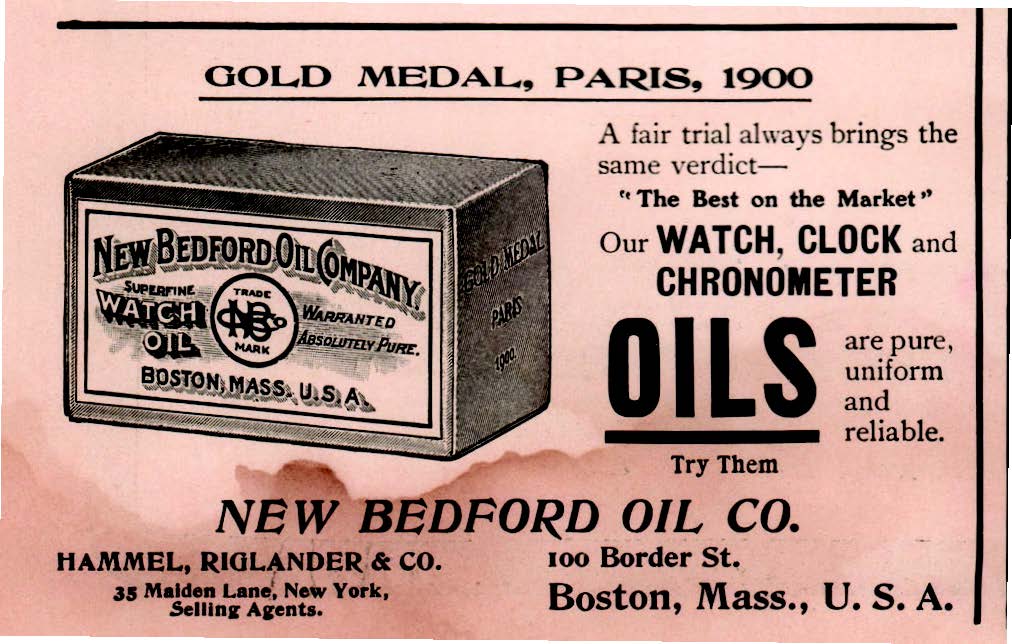Purposeful porpoise oil
Evan Zabawski | TLT From the Editor January 2017
For nearly a century, this lubricant reigned supreme.

Natural corrosion inhibition and excellent cold temperature properties were the dominant reasons for choosing whale oil.
WHALE OIL HAS SERVED MANY INDUSTRIAL PURPOSES. Most commonly it has been described as a popular lighting oil that was used until cheaper and cleaner burning alternatives like alcohol, camphene and kerosene dominated the market. But one of the lesser-known uses was as a lubricant.
Whale oil has been used in a variety of lubrication applications, one of the earliest being in the textile industry where it was used to treat jute as an aid both in working the fibers into yarn and preventing unravelling after twisting. Whale oil was similarly used to treat hemp for cordage (rope making).
Contrary to some widely cited quotes, NASA never used whale oil on the Ampex drives used to record Lunar Orbiter imagery, nor on the Hubble Space Telescope. The closest NASA came to any application using whale oil was at Cape Canaveral, where it was used to light the first lighthouse built near the tip of the cape in 1848. The lighthouse was permanently dismantled during the Civil War, nearly a century before NASA began launching rockets from there.
Later uses of whale oil included lubrication of fine instruments like sewing machines, firearms, typewriters and clock or watch mechanisms. Natural corrosion inhibition and excellent cold-temperature properties were the dominant reasons for its selection, until another similar product was found that outperformed it.
In 1878 Capt. Caleb Cook from Provincetown, Mass., wrote (in Smithsonian Miscellaneous Collections, Vol. XIX, 1880, pp. 16): “about the year 1816” fishermen “would sometimes extract the oil from the jaw bone” of porpoises “and give it to carpenters and those who used oil stones for sharpening their tools. Finding in this way that it did not gum nor glue, suggested the idea that it was just what was wanted for a nice lubricator. It was noticed that the weather at zero would not congeal it, neither would it corrode on brass.
“Watchmakers were then using olive-oil as the only fitting oil for watches; but by experimenting with the porpoise-jaw oil they found it superior to the olive or any other oil.” He then continues to state that in 1829 his father, Solomon Cook, extracted some oil from the jaws of blackfish (pilot whales) and “sent it to Ezra Kelley, of New Bedford, Mass., a skillful watchmaker, to be tested for watch-oil. Mr. Kelley soon found that this oil was superior to the porpoise-oil, as it had more substance and less chill.”
Caleb Cook claimed that his porpoise-jaw oil, though really from blackfish, was produced by a method known only to him and varied in price, according to supply, from $5-$15 per gallon (~$111-$333 today). Ezra Kelley began selling his oil in 1844, and it caught the attention of another local businessman, William Foster Nye, who sold a variety of oils other than lubricating oils like burning oils, castor oil and salad oil.
Nye developed his own “fish jaw oil” and took on Kelley, his main competitor, by offering significant discounts to dealers. In less than a decade he built a reputation for having “the best watch oil in the world” and eventually absorbed Kelley in January of 1896. By the end of the year, he had amassed nine-tenths of the global supply of fish jaw oil raw materials and, thus, captured the world market. Nye’s fish jaw oil continued to be sold into the 1970s, but after management passed back to the Kelley family in 1923, they began switching to Canadian crude oil for supply.
Nye Lubricants began the transition from porpoise oil and crude oil to synthetic raw materials in the early 1960s and can now boast that some of their lubricants are being used in many aerospace applications such as the International Space Station, the Mars Rover and the yet-to-be launched James Webb Space Telescope.
Perhaps this is how the rumor of whale oil being used by NASA started?
 Evan Zabawski, CLS, is the senior technical advisor for TestOil in Calgary, Alberta, Canada. You can reach him at ezabawski@testoil.com
Evan Zabawski, CLS, is the senior technical advisor for TestOil in Calgary, Alberta, Canada. You can reach him at ezabawski@testoil.com.